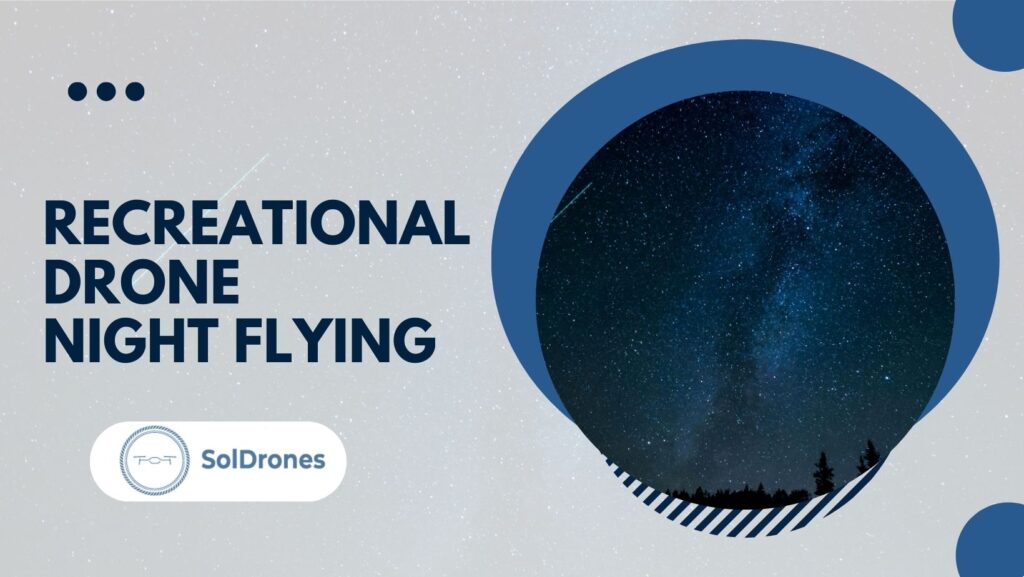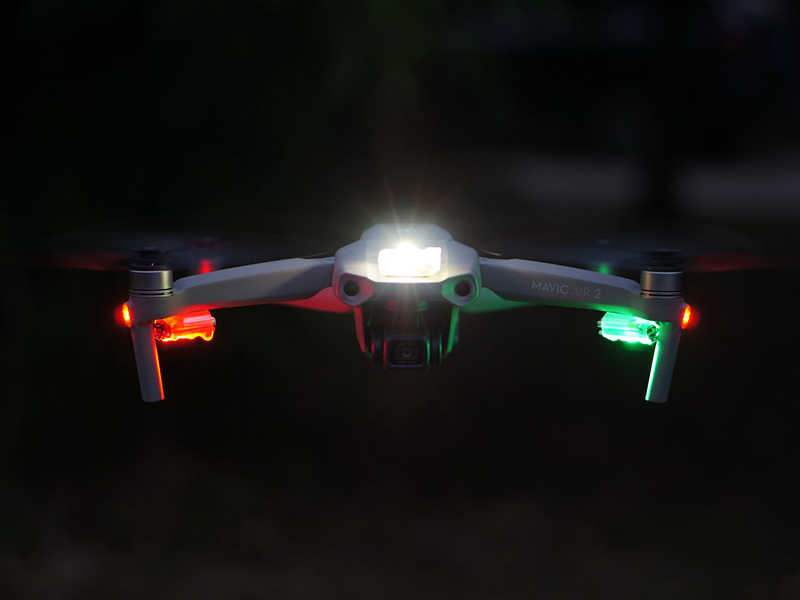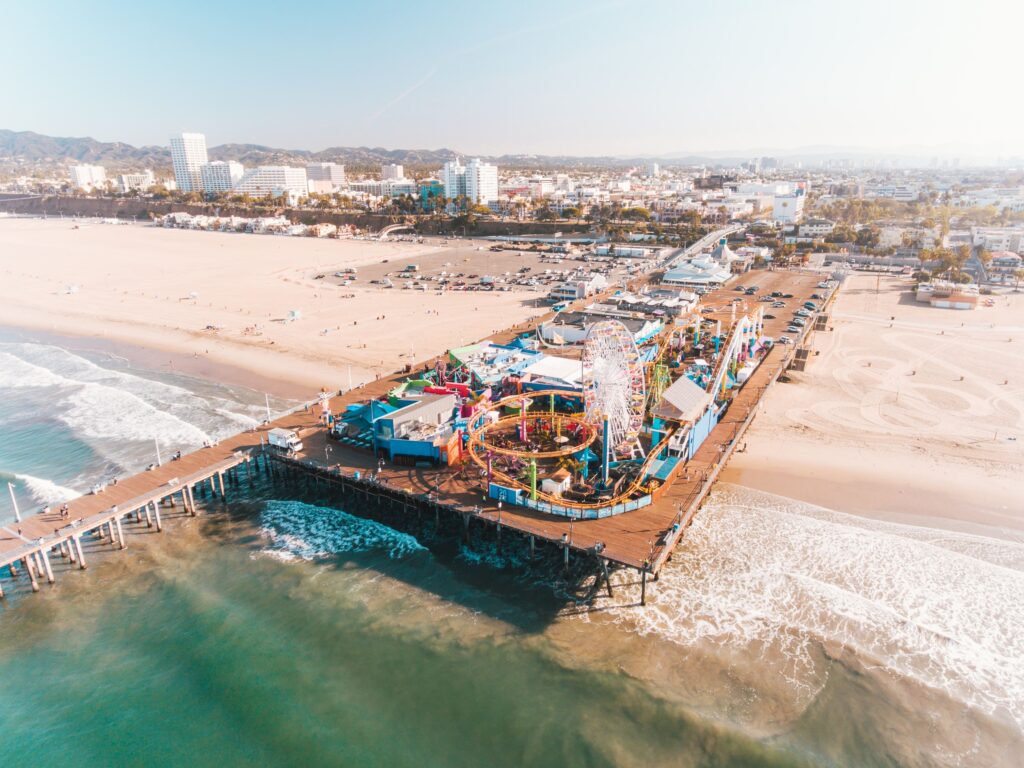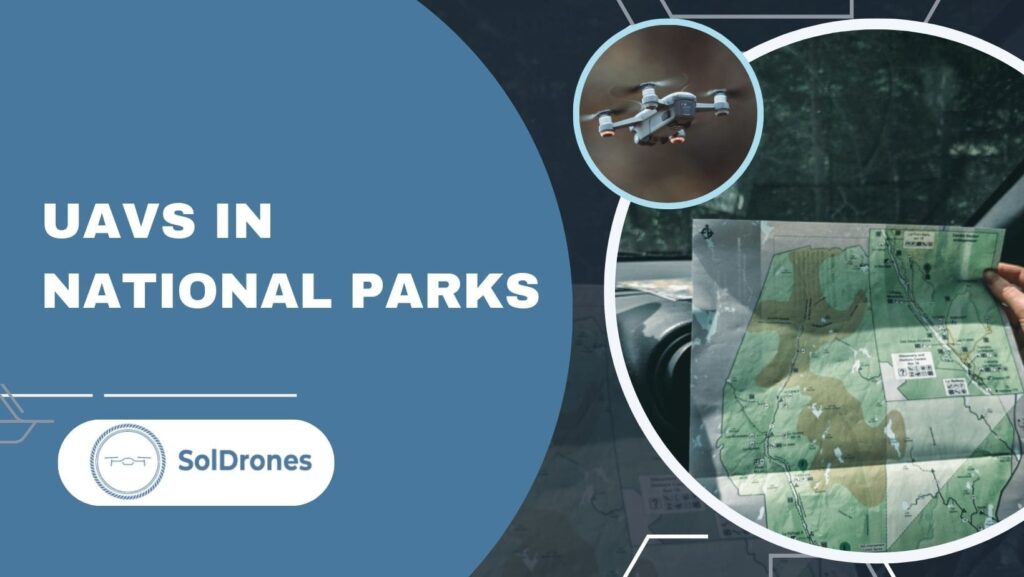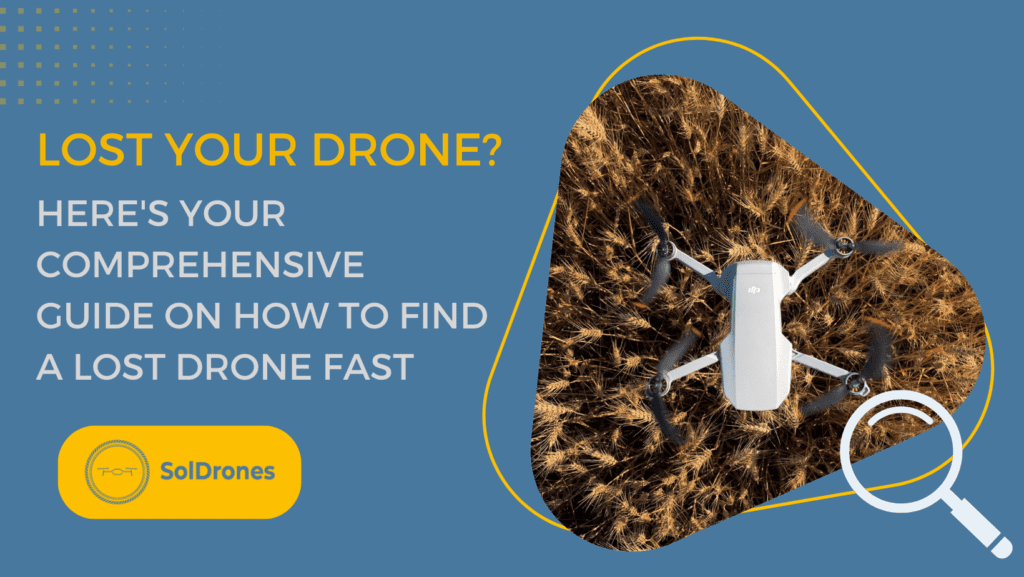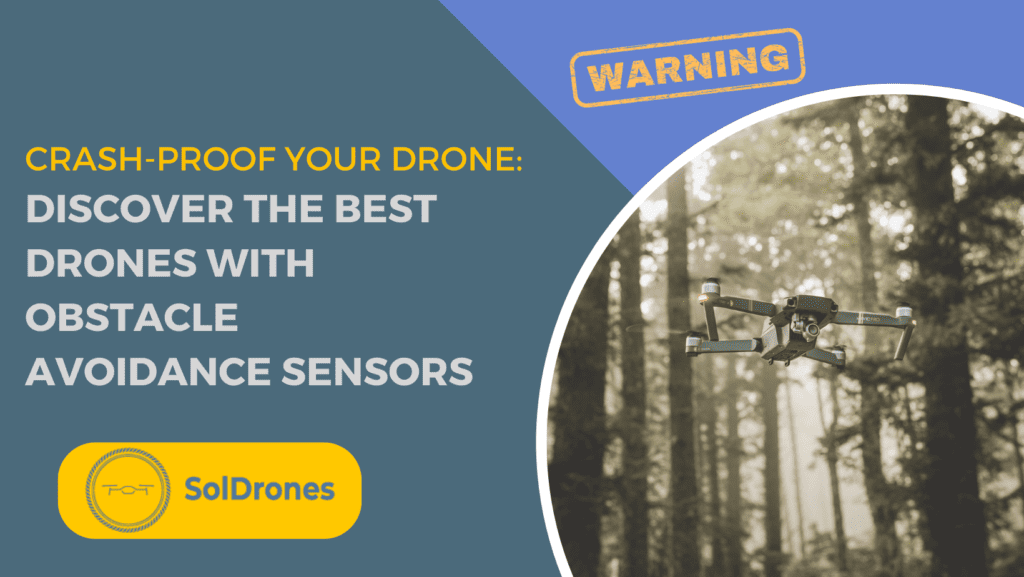Nighttime drone flights offer a unique perspective, but recreational pilots must prioritize safety and compliance with regulations.
Before taking your drone after dark, you must familiarize yourself with night operations rules and guidelines.
This blog post will provide a clear overview of the legal requirements and best practices for safe recreational drone flights at night.
By understanding these regulations, you’ll help maintain the safety of our shared airspace and responsibly enjoy the thrill of nighttime drone flying.
Article Highlights:
- Safety and Legal Compliance are Paramount: Ensure adherence to FAA guidelines, including using anti-collision lights and maintaining visual line of sight, for responsible and safe night flying.
- Preparation is Key: Familiarize with night operation rules, register your drone, and follow Community-Based Organization (CBO) safety guidelines to mitigate risks and enhance your flying experience.
- Stay Informed and Equipped: Regularly update yourself on FAA regulations, ensure your drone is equipped with the necessary anti-collision lighting, and consider taking the Recreational UAS Safety Test (TRUST) for a safer night flight.
Nighttime drone flights offer a unique perspective, but recreational pilots must prioritize safety and compliance with regulations.
Can You Fly Drones At Night?
Yes, you can fly drones at night in many countries, including the United States, but some specific regulations and conditions must be met to do so legally.
Need a decent drone for your nighttime flying adventures? Check out the DJI Mini 4 Pro, a top pick from other pilots like you:
- Lightweight and No Registration Required: Weighs under 249 g, eliminating the need for registration in many regions.
- 4K/60fps HDR Imaging: Captures stunning vertical videos in high quality, perfect for day and night scenes.
- Omnidirectional Obstacle Sensing: Enhanced safety with comprehensive obstacle detection, ideal for beginners and experienced users alike.
In the U.S., the Federal Aviation Administration (FAA) has outlined rules for both recreational and commercial pilots for flying drones at night.
Are there Special Requirements for Recreational Drone Night Flying?
Yes, there are special requirements for recreational drone night flying, especially in countries with well-established aviation authorities like the United States.
The Federal Aviation Administration (FAA) has specific guidelines for recreational drone flyers who wish to operate their drones at night.
Here are the key requirements and guidelines as per the FAA’s regulations:
- Follow a Community-Based Organization’s (CBO) Safety Guidelines: Recreational drone flyers must follow the safety guidelines of an FAA-recognized Community-Based Organization (CBO). These organizations often have comprehensive guidelines that include safe nighttime flying practices.
- Use of Anti-Collision Lights: Drones operated at night must be equipped with anti-collision lighting that is visible for at least 3 statute miles. The lighting must allow for the determination of the drone’s location and orientation, ensuring it’s visible to other aircraft and people on the ground.
- Keep the Drone within the Visual Line of Sight: Even at night, the drone must remain within the visual line of sight of the operator or a designated visual observer. This means the drone should always be visible to the operator, without the aid of any vision-enhancing device other than corrective lenses.
- Operate in Accordance with Part 107 Regulations (If Applicable): While recreational flyers primarily follow CBO guidelines, they must also be aware of and comply with relevant parts of the FAA’s Part 107 regulations, especially those related to night operations if they decide to transition from recreational to commercial drone flying.
- Registration and Marking: All drones weighing more than 0.55 pounds (250 grams) and less than 55 pounds (approx. 25 kilograms) must be registered with the FAA, and the registration number must be marked on the drone. This requirement applies to both recreational and commercial drones.
- Educational Requirement: Recreational flyers are encouraged to take The Recreational UAS Safety Test (TRUST) and carry proof of test passage while flying. This test includes safety information, which likely covers aspects of night flying.
These guidelines ensure that recreational drone flying at night is conducted safely, reducing the risk of accidents or interference with manned aircraft.
Drone operators need to stay informed about any changes to these regulations or additional local laws that may affect drone operations in their area.
What Are the New Part 107 Rules for Recreational Drone Pilots?
While several aspects of Part 107 rules are generally important for all drone pilots, here’s a breakdown of the most relevant points specific to recreational flyers:
- No Direct Applicability: Part 107 rules are designed for commercial drone operations. Recreational drone pilots generally don’t need to obtain a Part 107 Remote Pilot Certificate to become an FAA certified drone pilot.
- The Exception for Recreational Operations: The FAA created this exception so hobbyists can fly without a Part 107 license. However, there are still specific rules recreational pilots must follow.
- Key Rules for Recreational Pilots:
- TRUST Test: Pass The Recreational UAS Safety Test (TRUST) to demonstrate knowledge of safety rules.
- Registration: Register your drone if it weighs over 0.55 lbs.
- Fly within Visual Line of Sight (VLOS): Always keep your drone in sight.
- Yield to Manned Aircraft: Give way to airplanes and helicopters.
- Don’t Fly in Controlled Airspace without Authorization: Contact the airport or control tower if you need to fly in areas near airports.
Important Changes and Reminders:
- Remote ID: In the future, most drones will require Remote ID capabilities to broadcast their location and other information. This is still being phased in, but it’s something to remember.
- Night Flying: Requires anti-collision lights and a specific and initial knowledge test for recreational pilots.
- Updates are Common: Always verify the latest rules on the FAA website.
If You Fly Commercially: Even a paid flight requires a Part 107 Certificate.
What Anti-collision Lights Should You Use?
When flying a small unmanned aircraft at night, using the appropriate anti-collision lights is crucial for safety, compliance with regulations, and the visibility of your drone to others. Anti-collision lights for drones are designed to make the drone highly visible to other aircraft as well as people on the ground.
Source: Alien Drones
Here are key considerations and features to consider when choosing anti-collision lights for your drone:
- Visibility Range: The anti-collision lights should be visible for at least 3 statute miles (about 4.8 kilometers). This range ensures that manned aircraft can see your drone and helps avoid potential collisions.
- Color and Intensity: While there isn’t a strict rule on the color for recreational drone use, white and red are common choices because they are highly visible at night. The lights should be bright enough to be seen from a distance without impairing the vision of others.
- Strobe or Flashing Pattern: Anti-collision lights often use strobing or flashing patterns to attract attention and indicate the drone’s presence. A consistent flashing pattern helps differentiate your drone from static lights or other objects in the environment.
- Positioning and Coverage: Ideally, the lights should be positioned to provide 360-degree visibility, meaning they can be seen from all angles. This may require using multiple lights placed strategically around the drone.
- Battery Life and Power Source: Consider the anti-collision lights’ power source and battery life. They should have a sufficient battery life to last throughout your flights. Some lights are rechargeable, while others may run on replaceable batteries. The power solution should not significantly impact the drone’s flight time or payload capacity.
- Weight and Aerodynamics: The lights should be lightweight and compact, ensuring they don’t significantly affect the drone’s performance, flight time, or maneuverability. Aerodynamically efficient designs are preferable to minimize air resistance.
- Ease of Attachment: Look for lights that can be easily attached and removed from your drone without causing damage. Many lights come with mounting options like straps, clips, or adhesive pads compatible with various drone models.
- Compliance: Ensure that the lights meet any specific regulatory requirements set by the aviation authority in your country, such as the Federal Aviation Administration (FAA) in the United States. Compliance with these regulations is essential for legal and safe flight operations.
When selecting anti-collision lights for your drone, it’s important to balance between visibility, compliance, and the practical aspects of drone operation.
Reviewing product specifications, user reviews, and any recommendations from drone manufacturers or aviation authorities can help you choose the best lighting solution.
Why Is a Remote ID a Requirement for Flying a Drone at Night?
Here’s why Remote ID is a requirement for flying a drone at night, even for recreational pilots:
- Enhanced Airspace Safety: Remote ID acts as a digital license plate for your drone, broadcasting its location, altitude, speed, and identification information. This makes it visible and trackable in the airspace, especially when visual identification is difficult at night.
- Enforcement and Accountability: If a drone is being flown unsafely, near restricted airspace, or without proper authorization at night, Remote ID allows authorities to locate the control station and pilot quickly.
- Foundation for Future Operations: As drone use expands to more complex scenarios like package delivery, Remote ID will be even more crucial for maintaining a safe and organized airspace. The requirement for night flights gets us in line with this future vision.
Why specifically at night?
- Reduced visibility: Drones are naturally harder to spot at night, raising the risk of collisions with other aircraft or unexpected hazards. Remote ID helps mitigate this risk.
- Increased concern: Potential irresponsible or malicious drone use at night is a bigger concern, as it’s harder to track a drone’s operator visually in the dark.
How to Fly a Drone at Night in a Controlled Airspace?
Flying a drone at night in controlled airspace requires careful adherence to regulatory guidelines and often necessitates obtaining specific authorizations.
Here’s a step-by-step guide based on the regulations set forth by the Federal Aviation Administration (FAA) in the United States. While these steps are specific to the U.S., they provide a good framework that may be applicable in other countries with similar aviation regulatory bodies.
1. Understand the Airspace Classification
Controlled Airspaces are generally around airports and high-traffic areas, classified as Class B, C, D, and E. It’s crucial to know the classification of the airspace where you plan to fly.
2. Obtain Necessary Certifications
- For recreational flyers, follow the safety guidelines of an FAA-recognized Community-Based Organization (CBO).
- For commercial operations, ensure you have a Remote Pilot Certificate under Part 107, which requires passing an aeronautical knowledge test at an FAA-approved testing center.
3. Use an Approved Anti-Collision Light
Your drone must be equipped with anti-collision lighting visible for at least 3 statute miles. The lighting should be sufficient to reveal the drone’s location and orientation during night flight.
4. Get Airspace Authorization
- LAANC System: Use the Low Altitude Authorization and Notification Capability (LAANC) system to apply for airspace authorization. LAANC provides recreational and commercial drone pilots with access to controlled airspace at or below 400 feet and offers information on where and when drones can fly.
- DroneZone: If LAANC is not available for the specific airspace, you may need to apply for airspace authorization through the FAA DroneZone website.
5. Plan Your Flight
Pre-plan your flight route, keeping in mind the altitude, time, and area of operation. Ensure you’re aware of any temporary flight restrictions (TFRs) or Notice to Airmen (NOTAMs) that could affect your flight.
6. Maintain Visual Line of Sight
Even at night, you must keep the drone within your visual line of sight unless you have specific waivers that allow for beyond visual line of sight (BVLOS) operations. This might require the use of a visual observer.
7. Follow All Applicable Part 107 Regulations
This includes not flying over people, moving vehicles, and adhering to the maximum altitude and speed restrictions. Special attention should be paid to the Part 107.29 waiver, which allows for night operations under certain conditions.
8. Carry Required Documents
When flying, have your Remote Pilot Certificate, proof of drone registration, any necessary waivers, and airspace authorizations readily available.
9. Conduct a Pre-Flight Check
Ensure your drone, including its anti-collision lights and all control systems, is in good working condition before takeoff.
10. Monitor Conditions and Communicate
Keep an eye on weather conditions and any potential hazards in the area. If flying near airports, communication with the control tower or using a Notice to Airmen (NOTAM) might be required, depending on your authorization.
Remember, regulations can vary by country and are subject to change, so it’s important to check the latest guidelines from your local aviation authority before flying a drone at night in controlled airspace.
Tips For Flying Drones At Night
How To Take Long-Exposure Photos With Drone At Night Operations
Taking long-exposure photos with a drone during night operations can produce stunning results, capturing everything from cityscapes bathed in lights to serene landscapes under the moonlight.
However, it requires careful planning and execution due to the challenges of stabilizing the drone and managing camera settings in low-light conditions.
Here’s how to achieve great long-exposure shots with your drone at night:
Understand Your Drone’s Capabilities
Make sure your drone is capable of manual camera settings adjustments. You’ll need to adjust settings such as ISO, shutter speed, and aperture to capture long-exposure shots effectively.
Equipment Essentials
Equip your drone with a camera that performs well in low light conditions. A gimbal stabilizer is crucial to keep the camera steady during the long exposure to prevent blurring.
- Drone with manual camera controls: You’ll need a drone that allows you to adjust shutter speed, ISO, and ideally, aperture.
- ND filters: Neutral Density (ND) filters reduce the amount of light entering your camera, allowing for longer exposures without overexposing the image. Get ND16, ND32, or ND64 filters depending on how much light reduction you need.
- Sturdy tripod: Since your drone will be hovering, keeping it stable in the air is crucial for sharp long exposures.
Plan Your Flight and Composition
Scout your location during the day to plan your shots and understand the airspace. Use apps or maps to check for any restrictions and plan your composition and flight path ahead of time.
Camera Settings
- Shoot in manual mode: This gives you full control over exposure.
- ISO: Keep the ISO as low as possible (usually ISO 100) to minimize noise.
- Shutter speed: Start with 2-5 seconds and experiment to find the right exposure for your scene. Longer shutter speeds will blur more pronounced motion in moving elements like car headlights.
- Aperture (if adjustable): If your drone allows aperture control, a mid-range like f/5.6 or f/8 often provides good sharpness.
- RAW format: Shoot in RAW for maximum flexibility when editing in post-processing.
Wait for Optimal Conditions
The Ideal conditions for long-exposure drone photography include minimal wind and clear skies. Wind can cause the drone to move and blur photos during a long exposure.
Stabilize Your Drone
Before taking the shot, let your drone hover in place for a few seconds to ensure it’s stable. The gimbal will help, but the drone should be as steady as possible to avoid blur.
Experiment with Exposure Time
Start with shorter exposures and gradually increase as needed based on the results. Be mindful of the drone’s battery life, as long exposures and multiple attempts can consume more power.
Take Multiple Shots
Take several shots at varying settings to increase your chances of capturing a sharp image. This also provides options for post-processing.
Flying and Shooting Tips
- Find your scene: Look for elements with attractive lights or movement (car traffic, waterfalls, cityscapes).
- Set up: Fly your drone to the desired position and ensure it’s level and stable.
- Focus: Manually focus your camera on a distant light source for the sharpest results.
- Anti-collision lights: Make sure they’re turned on.
- Test shots: Take a few test shots at varying shutter speeds to dial in your exposure.
- Minimize vibration: Turn off any unnecessary drone features that might cause vibrations.
Additional Considerations
- Weather: Calm nights with minimal wind are ideal for long-exposure drone photography.
- File Storage: Long exposure photos, especially in RAW format, can be quite large, so bring extra memory cards.
- Post-processing: Editing software like Adobe Lightroom or Photoshop can enhance your long-exposure photos, allowing you to refine contrast, color, and details.
Remember, successful long-exposure photography with a drone at night requires practice and patience. Start with simple shots and gradually experiment with more complex compositions as you become comfortable with the settings and handling your drone in low light conditions.
Checklist For Flying Drones At Night
Here’s a comprehensive checklist to ensure you have everything covered for a safe and successful drone flight at night:
Pre-flight:
| Regulations | Requirements |
| Ensure you understand local and FAA regulations for night flying. | |
| Have you taken the updated FAA knowledge test for recreational pilots (if applicable)? | |
| Airspace | |
| Check if your intended flight area is in controlled airspace. | |
| If necessary, obtain LAANC authorization in advance. | |
| Drone | |
| Securely install anti-collision lights visible from at least 3 statute miles. | |
| Check battery levels for both the drone and controller. | |
| Inspect the drone for any damage or signs of wear. | |
| Weather | |
| Evaluate wind speed, cloud cover, and the chance of precipitation. | |
| Be more cautious of poor weather at night. | |
| Location | |
| Survey the area in daylight beforehand to familiarize yourself with potential obstacles. |
On-Site:
| Set up | Requirements |
| Choose a clear area to take off and land. | |
| Prepare your controller and monitor. | |
| Pre-flight checks | |
| Confirm anti-collision lights are working. | |
| Ensure a strong GPS signal. | |
| Complete your usual pre-flight checklist. | |
| Visual observer (VO) | |
| Consider having an extra person assist with visual observations, especially in complex environments. |
During the Flight:
| Requirements | |
Maintain visual line of sight (VLOS): The lights help, but don’t rely on them solely.
Be aware of surroundings: Actively scan for other aircraft, hazards, or people. | |
| Adjust flight as needed: Be prepared to modify your flight path due to unexpected conditions. | |
| Monitor battery level: Night flights can sometimes drain batteries a bit faster. |
Post-Flight:
| Secure and inspect: Land safely, check your drone for issues, and remove the anti-collision lights. | |
| Data review: If needed, review your flight logs and footage. |
Always remember to prioritize safety and follow both FAA guidelines and local regulations!
Final Thoughts
Recreational drone night flying offers a unique and exhilarating experience, allowing pilots to capture breathtaking views and enjoy the tranquility of the nighttime atmosphere.
However, as this comprehensive overview outlines, pilots must adhere to specific rules, regulations, and safety guidelines to ensure a safe and legal flying experience.
Familiarizing oneself with the FAA’s regulations, including using anti-collision lights, maintaining a visual line of sight, and understanding airspace restrictions, is crucial. Taking the Recreational UAS Safety Test (TRUST) and registering your drone further underline the commitment to responsible drone operation.
By embracing these practices, recreational drone pilots can safely explore the night skies, capturing stunning imagery while respecting the safety and privacy of others.
This harmonious balance between exploration and adherence to regulations ensures that the skies remain safe and accessible for everyone in the burgeoning world of drone flying.
FAQs
What happens if my drone crashes at night?
If your drone crashes, assess the situation safely, retrieve your drone if possible, and report any injuries or significant property damage to the appropriate authorities.
How can I ensure my drone’s battery lasts during night flights?
Ensure your batteries are fully charged before flight, monitor battery levels closely during flight, and avoid excessively cold temperatures that can reduce battery performance.
What should I do if another aircraft approaches while I’m flying at night?
Always yield to manned aircraft. If you see an aircraft approaching, descend or maneuver your drone to maintain a safe distance.
Can I fly my drone during a nighttime event or fireworks display?
Flying during events or near fireworks requires caution and often special permission due to safety risks and potential interference with emergency services. Always check local regulations and event policies.
Is flying a drone at night harder than during the day?
Yes, flying at night can be more challenging due to reduced visibility, making it harder to maintain visual line of sight and navigate.

